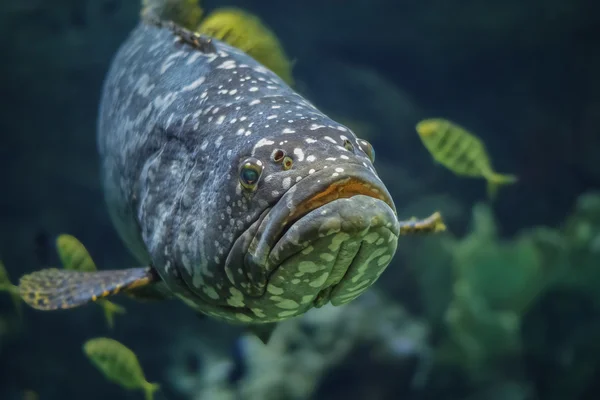

A diet rich in fish can lower your risk of cardiac disease by reducing blood clotting and levels of triglycerides (blood fat) as well as lowering blood pressure if you have preexisting hypertension. An adequate intake of omega-3 fatty acids and especially DHA may decrease your risk of depression during pregnancy as well as postpartum depression. Speaking of boosted brain power, getting enough omega-3s may also improve your memory - especially helpful when you’re battling a case of pregnancy brain. It’s more important than ever in the third trimester, when your baby’s brain growth is fast and furious. Fattier varieties of fish in particular, like salmon, are a source of the omega-3 fatty acid DHA, which has been shown to boost baby brain power.
#Pictures of a grouper fish skin#
Fish is a first-rate source of lean protein and its essential amino acids that help create all of your baby’s cells - from skin and muscle to hair and bones. The good news (at least for moms who enjoy seafood) is that fish really does offer big benefits for both pregnant women and their developing babies.

If a thermometer isn’t available, you’ll know it’s done when the flesh is opaque (milky white) and the filets flake easily with a fork. Cook seafood (all types, including shucked clams, oysters, shrimp, lobster and scallops) until it reaches an internal temperature of 145° Fahrenheit.Use separate cutting boards for meats (including fish) and fruits/veggies.Store it in the fridge in a sealed container if you’re not cooking it immediately. If you're buying fresh seafood, properly refrigerate it.
#Pictures of a grouper fish how to#
Here are a few tips on how to prepare fish that will reduce your exposure to any potential contaminants: How to properly prepare fish during pregnancyīy now you’ve probably heard that you should avoid sushi during pregnancy - and the same goes for any other raw (oysters, ceviche, smoked salmon) or undercooked fish, since they can contain bacteria and parasites (like Listeria) that are dangerous for your developing baby. But to avoid the higher levels of PCBs often found in farmed salmon, opt for wild (which also contains more of those healthy omega-3 fats) or organic farmed salmon. Heard conflicting advice on salmon during pregnancy? Salmon is definitely one of nature's best providers of DHA.

What types of fish are safe to eat during pregnancy?ĭespite the long list of fish to limit during pregnancy, the vast majority of fish you'll find in the store and at restaurants are safe to eat when you're expecting at two to three servings (8 to 12 ounces) per week. If no information is available, stick to one serving of these fish per week, with skin and excess fat removed.


 0 kommentar(er)
0 kommentar(er)
